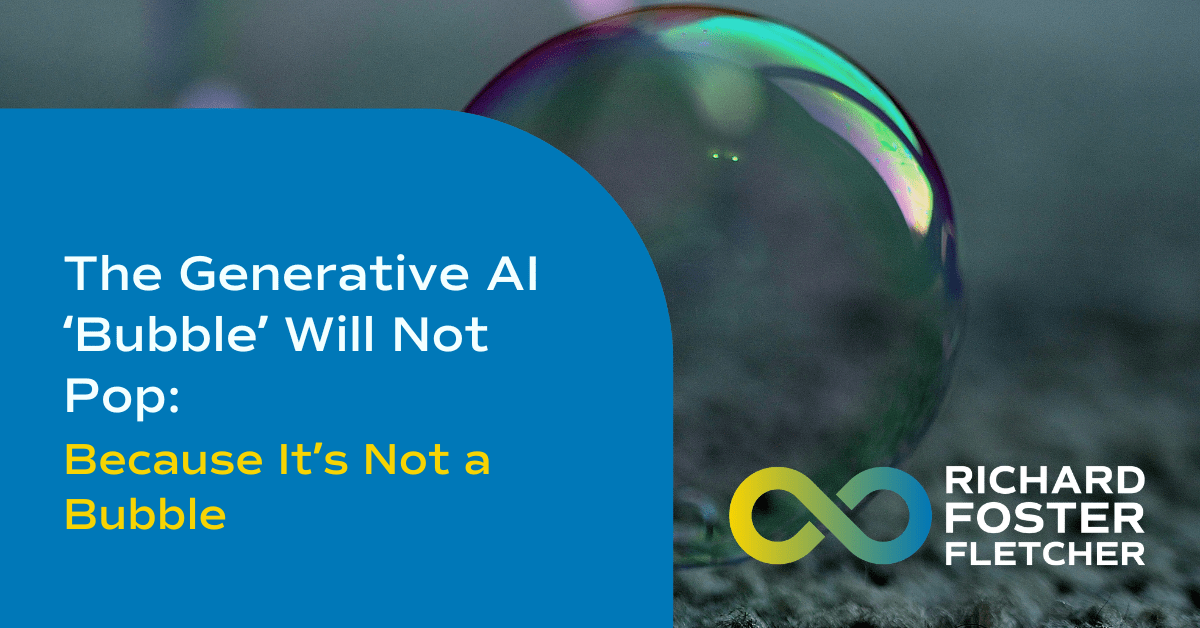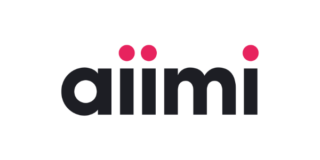
The Generative AI “Bubble” Will Not Pop: Because It’s Not a Bubble

The narrative that generative AI is just another bubble waiting to burst, much like the dot-com bubble of the late 1990s, fundamentally misunderstands the current technological landscape. Unlike the speculative excesses of the dot-com era, generative AI is not merely a temporary trend driven by hype. It is an evolutionary force, gradually and permanently transforming industries, economies, and the way we live and work.
Market Corrections Are Not Crashes: The Maturity of Generative AI
Recent market fluctuations, particularly around AI-related stocks, have led some to declare that the AI bubble is about to burst. However, such assertions fail to recognize the crucial difference between a market correction and a market collapse. Market corrections, as we are witnessing, are a natural part of any evolving industry. They signal a shift from irrational exuberance to more sustainable growth, but they do not indicate the collapse of the technology itself.
In fact, even as AI stocks have seen volatility, the underlying adoption of AI technologies across sectors remains robust. Companies such as Adobe, Nvidia, and OpenAI continue to integrate AI more deeply into their operations, driving innovation and creating real-world value. Nvidia’s GPUs remain the backbone of AI infrastructure, and despite recent stock price fluctuations, the demand for their technology has not diminished. The continued integration of AI into products like Adobe’s Creative Cloud demonstrates that generative AI is far from a passing fad; it is becoming embedded in the fabric of modern business.
Real-World Use Cases: Generative AI’s Ingrained Value
The comparison between the generative AI boom and the dot-com bubble overlooks a critical distinction: the tangible, real-world use cases of generative AI that are already proving their value across industries. During the dot-com bubble, many companies lacked a clear path to profitability or a viable business model. In contrast, today’s generative AI technologies are being actively deployed to solve concrete problems.
For example, generative AI tools like Adobe Firefly and Midjourney are revolutionizing the creative industries. These tools are not just novelties; they are enabling designers and artists to produce high-quality content more efficiently than ever before. Midjourney, which has already reached profitability, demonstrates that AI-driven creativity is not just a speculative venture but a sustainable business model. Additionally, AI’s integration into business platforms like Canva and Getty Images is enhancing productivity, helping companies maintain their competitive edge in a crowded marketplace.
The Maturation of AI: Beyond the Hype
The dot-com bubble was characterized by companies with little more than a flashy website and vague promises of future success. In contrast, today’s AI companies are building on decades of research and development. The technology behind generative AI is sophisticated, with applications that extend far beyond what was imagined even a few years ago.
As the market matures, we are likely to see a consolidation of AI players, with the strongest companies—those with solid business models and real value propositions—emerging as leaders. This consolidation is not a sign of a bubble bursting but rather an indication of the industry’s progression towards stability. Companies like OpenAI and Nvidia are not just riding a wave of hype; they are actively shaping the future of technology by addressing real needs and challenges.
The Long Road to Adoption: Understanding Business Cycles
One of the key misunderstandings fueling the bubble narrative is the expectation that AI should have already transformed industries within just a couple of years. This expectation is not only unrealistic but also historically inaccurate. Large-scale technological shifts, especially those as complex as AI, take time to be fully integrated into business processes.
The internet itself took more than a decade to reach mainstream adoption in business, and even then, its impact grew gradually. Similarly, generative AI is still in the early stages of what will likely be a long and sustained evolution. Companies are currently experimenting with AI, learning how to integrate it into their operations, and gradually realizing its full potential. The fact that we have not yet seen a complete transformation is not a sign of failure; it is simply the nature of technological adoption.
The New Reality: Generative AI Is Here to Stay
Generative AI is not a bubble because it is grounded in real-world applications that deliver tangible value. From creative industries to business operations, AI is becoming an indispensable tool, driving efficiency and innovation. The recent market fluctuations are a natural part of the technology’s maturation process and should not be mistaken for a collapse.
Generative AI will continue to evolve, with companies refining their models, addressing ethical concerns, and finding new ways to apply the technology. As with any transformative technology, there will be winners and losers, but the overall trajectory is clear: AI is here to stay, and its impact will only grow over time.
Three Key Questions for Business Leaders
- How can businesses effectively navigate the market consolidation of AI technologies to ensure long-term success?
- What strategies should companies adopt to integrate AI gradually, allowing for sustainable growth rather than short-term gains?
- How can businesses leverage generative AI to create real value in their operations, avoiding the pitfalls of speculative over-investment?
















